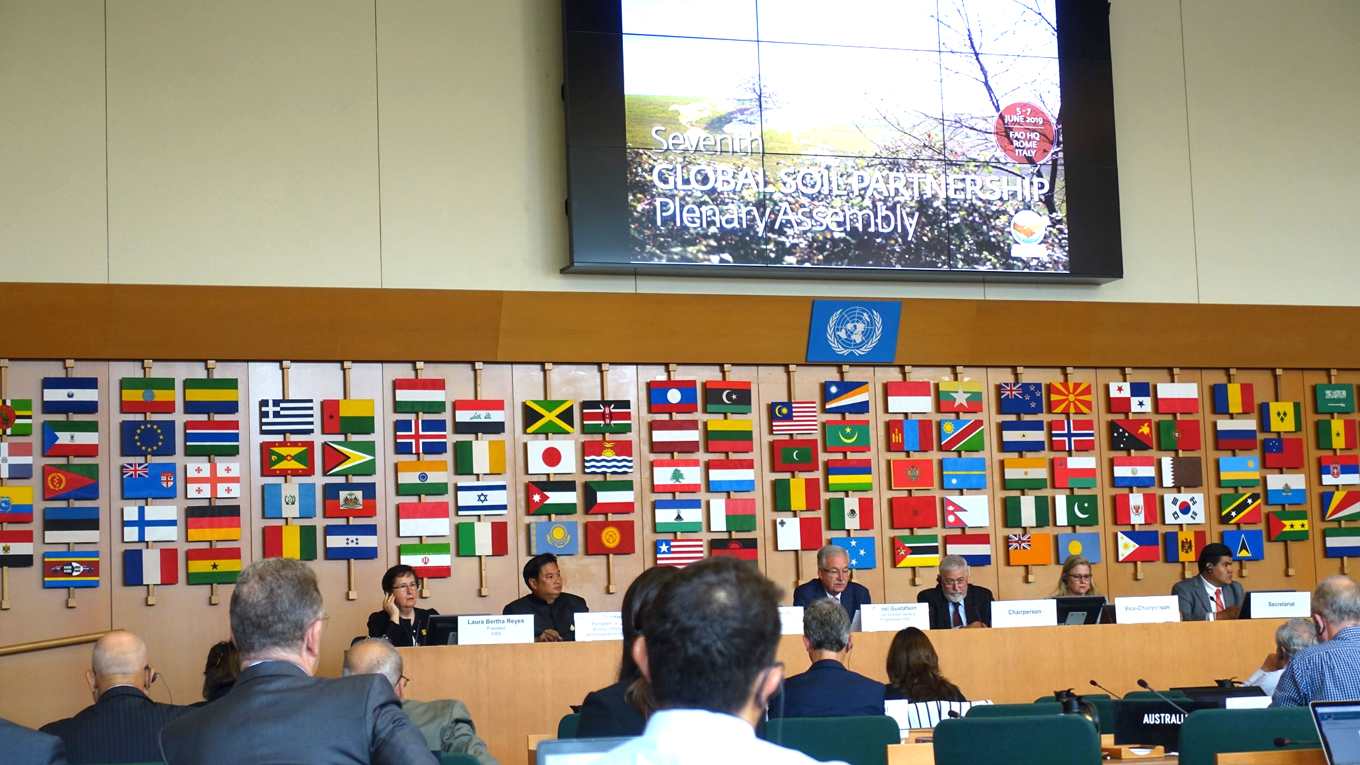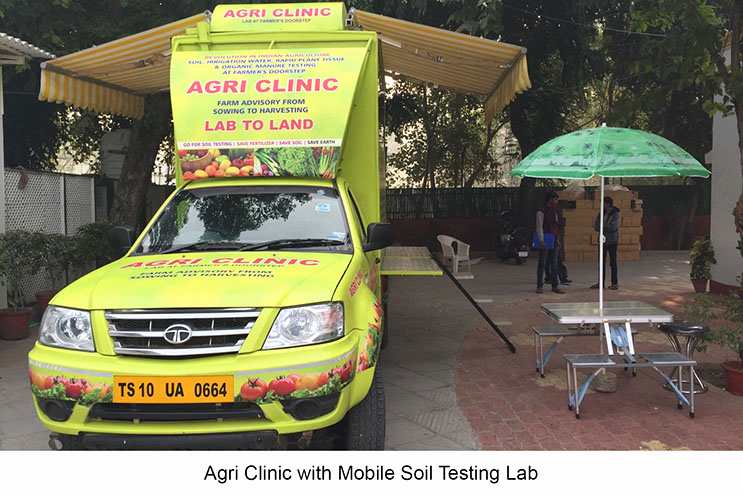United Nations: wrong fertilization makes soil thin, 1/3 of the world's soil is degraded, draw a map of the world's soil, Taiwan can participate
107 sharing
In nature, it takes about 500 years to produce soil 2.5 centimeters thick, but precious natural resources are wasted at your feet. Soil is the largest reservoir of organic carbon on earth, and organic matter is the key to soil fertility. Since more than half of the organic matter is in the form of carbon, the United Nations Food and Agriculture Organization (FAO) is making a global soil organic carbon map to understand the global soil condition.
Although Taiwan is not a member of the United Nations, the organic carbon map-making team told the "upstream and downstream" reporters that Taiwan can still deliver relevant information to piece together a complete soil map of the world.
Global 1x3 soil degradation, losing 24 billion metric tons per year
According to the statistics of the United Nations, there are 1 million tons of soil degradation in the world, with 24 billion metric tons of soil lost every year. Industrial activities, excessive use of pesticides and fertilizers, livestock waste, and even household plastics can contaminate the soil, with serious problems but limited attention. A few large-scale surveys have revealed worrying data that there are thousands of soil pollution sites in the United States, more than 80,000 in Australia, and nearly 20 percent of China's arable land is contaminated. Seventy percent of India's arable land is degraded, losing an average of 16 metric tons of soil per hectare per year.
In order to alert everyone to the soil crisis, the Food and Agriculture Organization of the United Nations began to promote the Global soil Partnership (GSP) in 2012, designating 2015 as the International soil year, December 5 as World soil Day, and holding the 7th Global soil Partnership Conference in Rome in early June this year.


Soil Mobility Laboratory in India, to Field Service (Source: NAC)
The background of neighboring countries is the same, and cross-border cooperation starts from the region.
The state of soil in different countries in the world is different, and the problems they face are also different. There is also a great gap in the research, legislation and law enforcement of soil. In some areas with serious soil degradation, such as Malawi, there is a lack of funding and technology for research; Thailand is aware of the problem but is powerless, and the central government in Bangkok is out of reach of remote villages.
In contrast, the European Union not only takes the lead in scientific research, but also gradually implements it as a policy and establishes a transnational soil database. The World soil Information Center (ISRIC) in the Netherlands collects data from all over the world to draw digital dynamic maps of global soil organic carbon (soil organic carbon), water content and clay distribution, and uses an open software framework to attract more governments and groups to participate.
Regional cooperation is an important step in soil conservation because the background conditions of neighbouring countries are similar and the exchange of knowledge can have a doubling effect. The Asian Center of Excellence in soil Research (CESRA) in Bangkok has been joined by 24 countries, including Japan, South Korea, China, the Philippines and Vietnam.
FAO produces global soil maps, and Taiwan can also participate
FAO noted that most of the technologies for soil conservation already exist, and the obstacles to promotion are mainly at the policy level. At present, few countries have formulated special laws for soil protection, and most of them are managed in environmental laws and regulations.
In order to build a global governance framework, FAO launched the Voluntary guidelines for Sustainable soil Management in 2017, calling on countries to reduce soil erosion, increase the content of soil organic matter, and promote the balance and circulation of soil nutrients. Prevent soil salinization, acidification, pollution, consolidation, increase soil biodiversity and so on.
Soil is also the largest reservoir of organic carbon on earth, because carbon loss caused by ploughing reduces soil nutrients and exacerbates climate change. Organic matter is the key to soil fertility, and more than half of the organic matter exists in the form of carbon. FAO is producing a global map of soil organic carbon to understand the distribution of soil organic carbon and to transfer knowledge and technology to preserve soil organic carbon.
Some countries are reluctant to provide detailed soil data, so they are produced in accordance with the operation manual prepared by FAO and submitted to the soil organic carbon map of the country, which is reviewed by FAO and compiled into a global map. Although Taiwan is not a member of the United Nations, the organic carbon mapping team said that it is still possible to deliver relevant information and piece together a complete soil map of the world.
Why is the soil thinner with more chemical fertilizers? Yang Qiuzhong, academician of Academia Sinica, said so.
The Master of soil wrote a prescription for the specific medicine of Chen Xingzong, a pesticide company: I advise you to stop fattening!
- Prev

Pingtung Agricultural University version 2.0 starts county magistrate Pan Mengan encourages young farmers to build brands
Pingtung County-the 5th Pingtung County Agricultural University course will be launched this year. This year, the course will be upgraded to version 2.0. In addition to continuously imparting agricultural professional planting techniques in primary classes, elite classes will be planned to introduce industry staff and...
- Next

Prevention and control of diseases and insect pests of Luoshen flower: Fusarium wilt of Luoshen flower is easy to appear, and there are four major methods to strengthen prevention and control in rainy season.
Taitung Agricultural improvement Farm is the main producing area of Luoshen Flower in China. According to the investigation of field diseases and insect pests in Taitung Agricultural improvement Farm of Taitung District in recent years, wilt often occurs in Taitung Luoshen flower field, and the incidence of disease in some areas is even more than 80%. Strict to farmers
Related
- A course of planting techniques and methods on how to grow carrots
- How to plant the latest tulips?
- Is it better to pick tea in the morning or in the afternoon? When is the best time for tea to be picked? what is the third or fifth tea?
- Launch Yuanxiao Happy combination Haocha + Tea Yuan healthy Taste
- Penghu Tourism "Fireworks 20 Parade with You"
- 2022 West Lake Happiness holds "Digital Revitalization Voucher" and draws iphone13 and laptop.
- Banqiao Fuzhou social houses are designed to change start-up combined with police elimination to create a safe and livable environment
- The convenient measure of "mechanical weeding" in Xinbei has been abused and the Agriculture Bureau has imposed heavy penalties on the illegal land consolidation.
- Changgeng University Joins Hands with Four Memory Factories to Rescue Memory Talent Shortage
- The list of Taiwan's top 100 MVP managers is listed by the Director-General of the Farmers' Association of Sanxia District.

